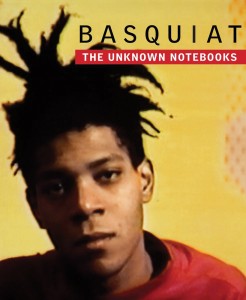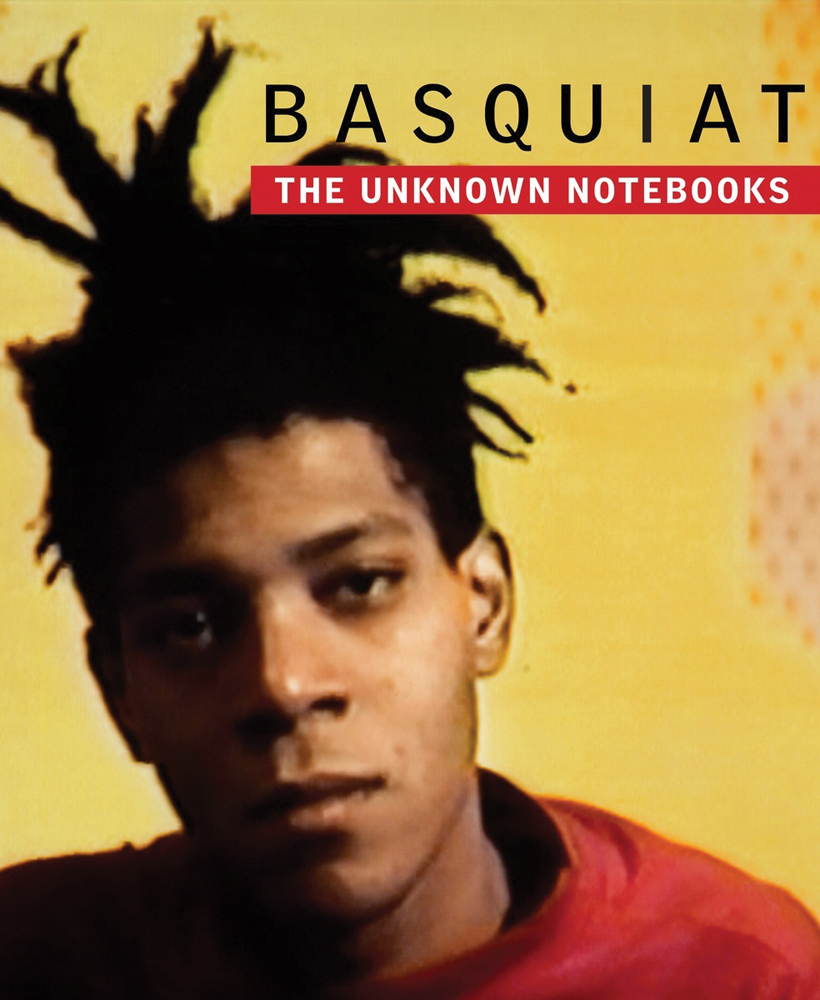 Basquiat: The Unknown Notebooks
Basquiat: The Unknown Notebooks
Edited by Dieter Buchhart and Tricia Laughlin Bloom
Skira Rizzoli Publications/Brooklyn Museum, 246 pages, $50.
THERE’S A UNIQUE POWER in the raw, organic evidence of an artist at work—unfinished canvases in a paint-spattered workspace, rough studies and drawings, and even the artist’s personal effects. One thinks of Francis Bacon’s famously chaotic London studio, meticulously catalogued and transported, piece by messy piece, to a Dublin museum after Bacon’s death. That quality of the artist at work comes through in Basquiat: The Unknown Notebooks, the catalog for the exhibit of the same name that ran until August at the Brooklyn Museum. The notebooks offer a new perspective on the manic creativity of Jean-Michel Basquiat (1960-1988), who in his brief but meteoric career managed to produce 600 paintings, 1,500 drawings, assorted sculptures and mixed-media works, and the as-yet uncatalogued notebooks (roughly spanning 1980 to 1987).
A cynic might note that Bas-quiat did the one thing sure to grant himself lasting fame—he died young and tragically (of an overdose) at the height of his creative powers. Born in Brooklyn to a well-to-do family, his childhood was nevertheless a troubled one. As soon as he was able, he ran off to the East Village, where he came of age during the hyped-up art market of the 1970s and ’80s, made a name for himself as the graffiti artist “SAMO,” and quickly drew the attention of other artists, art dealers, and, most importantly, collectors.
Basquiat was a close friend of Andy Warhol (who knew a thing or two about courting fame), and seemed acutely aware of how to market himself, all of which helped establish him as a celebrity. Today his works regularly sell to the tune of tens of millions of dollars, and there’s a veritable cottage industry of T-shirts, posters, coffee mugs, and so on, bearing his radiant, instantly recognizable images. Like the work of his friend Keith Haring, Basquiat’s imprint seems to be everywhere.
Basquiat’s short life—he died at age 27—has already been the subject of a number of biographies and memoirs. Julian Schnabel, a fellow painter and one of his contemporaries, directed a memorable biopic called simply Basquiat (1996), and there has been a handful of documentaries. The most recent project is a memoir called Widow Basquiat: A Love Story (2014), by his former girlfriend Jennifer Clement. On that topic, Basquiat may have preferred relationships with women in the end—not-withstanding rumors of youthful hustling and the like—but he was ahead of his time in refusing to give his sexual orientation a label, and he included elements of “gender fucking” in his art.
 As time passes, it’s increasingly clear that Basquiat was an artist of real power, and his notebooks show us an artist who, like many young geniuses, did not seem capable of stopping the flow of energy and ideas that coursed through him. They display, in the words of Dieter Buchhart, exhibit curator, his “omnivorous mind.” It’s worth reiterating that the notebooks selected for the Brooklyn show represent just a fraction of what the artist left behind—one wonders at what’s yet to be discovered, but one finds plenty to marvel at in the images included here. Bas-quiat seemed to seize upon any available surface for a canvas (refrigerators, old tires, and windows, for example). In the notebooks, he appropriated things like receipts, parts of packaging, and other ephemera. He drew in them, painted in them, and sometimes pulled disparate items together into arresting collages.
As time passes, it’s increasingly clear that Basquiat was an artist of real power, and his notebooks show us an artist who, like many young geniuses, did not seem capable of stopping the flow of energy and ideas that coursed through him. They display, in the words of Dieter Buchhart, exhibit curator, his “omnivorous mind.” It’s worth reiterating that the notebooks selected for the Brooklyn show represent just a fraction of what the artist left behind—one wonders at what’s yet to be discovered, but one finds plenty to marvel at in the images included here. Bas-quiat seemed to seize upon any available surface for a canvas (refrigerators, old tires, and windows, for example). In the notebooks, he appropriated things like receipts, parts of packaging, and other ephemera. He drew in them, painted in them, and sometimes pulled disparate items together into arresting collages.
But what’s most striking about the notebooks are the words: prose poems, simple lists (even quotidian jottings, like grocery lists), and often just a single word, name, or phrase afloat on a page. In one of the catalogue’s essays, “Basquiat’s Poetics,” poet Christopher Stackhouse posits that he was a writer as much as an artist, and sees in his wordplay a direct line of descent from the Language Poets, the New York School, and the Beats. Stackhouse goes on to provide a close reading of Basquiat’s word-based work and likens it to two fellow-traveler poets, proto-beatnik Bob Kaufman (1925-1986) and the little-known Norman Pritchard (b. 1939), both of whom, like Basquiat, explored the on-the-page visual possibilities of text. Henry Louis Gates, Jr., in his own contribution to the catalogue, says of Basquiat’s SAMO graffiti that “he was a Twitterer before Twitter,” mastering the ability to tap into the current cultural conversation with just a few resonant words.
He was an inveterate list maker, as noted above, and while many of these were short, he could also launch into longer efforts, with surprising results. One thinks of Emerson’s remark, in his essay, “The Poet” (a quote later taken to be an anticipation of Walt Whitman’s poetry): “Bare lists of words are found suggestive to an imaginative and excited mind.” Basquiat’s nine-page list called “Melville” (1987), reproduced in the catalogue and categorized as a series of “drawings,” is a kind of free-association riff inspired by Moby Dick. In another example, even the sparest word play, like the simple name “Mark Twain ©” on a single page, prompts meditation on the nature of creative celebrity, identity, and the commodification of art. Basquiat played often with brand names, copyright symbols, and other marketing-related tropes. It’s no coincidence, either, that both Melville and Twain examined race and identity in their works—a topic that Basquiat came back to again and again.
Had he never picked up a spray-paint can or a paintbrush, Basquiat would probably have achieved some kind of fame as a writer, or even as a musician. He was a member of a band, and he even produced a rap album. He was a born self-promoter, to be sure, but he had a genuine talent to promote. For those unable to attend the Brooklyn Museum exhibit, this catalogue presents a worthy summary of one more facet of Basquiat’s unique contribution to American art.
Jim Nawrocki, a writer based in San Francisco, is a frequent contributor to this magazine.






